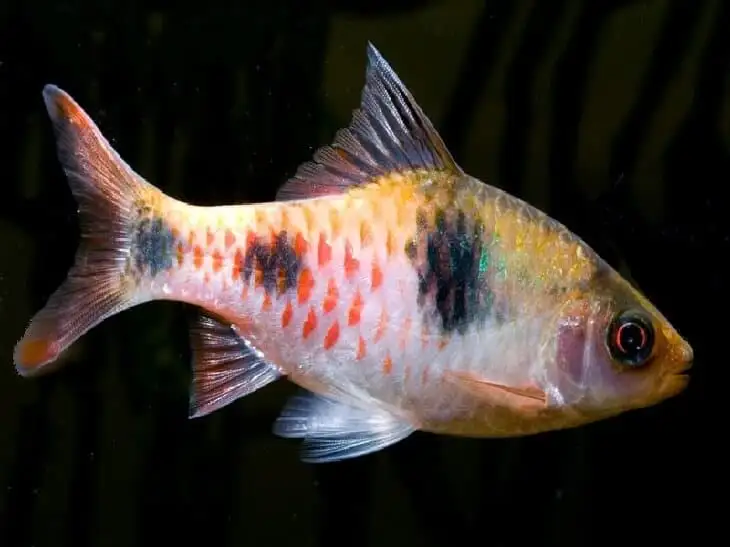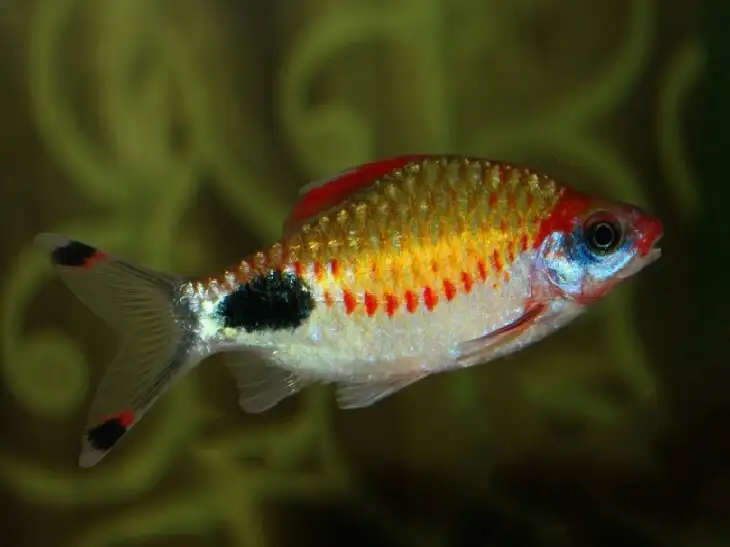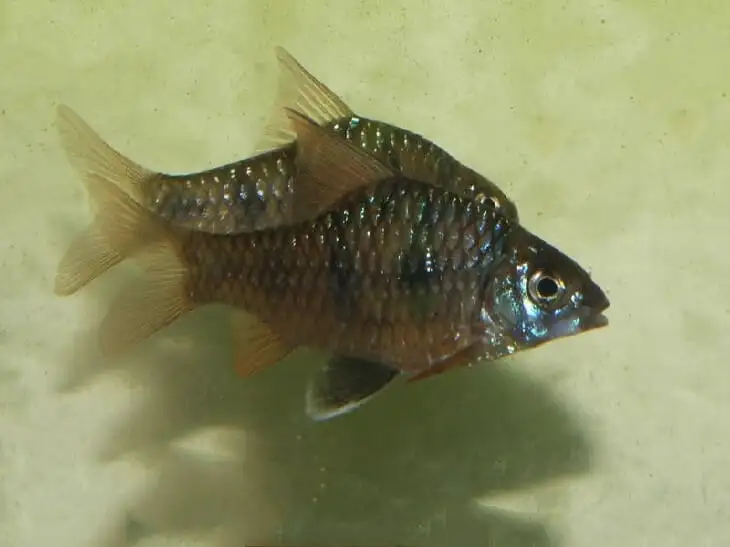Dawkinsia tambraparniei, Puntius tambraparniei

Dawkinsia tambraparniei, Puntius tambraparniei in natural conditions lives in the basin of the Tamirabarani River, flowing in the southern part of India. The fish gets its name "Dawkinsia" after Richard Dawkins, for his contribution to evolutionary biology, and "tambraparniei" after the Tamirabarani River where it lives. This species of barb is undemanding and these fish can be recommended for novice aquarists. Currently, Dawkinsia tambraparniei, which have been bred in aquarium conditions, are offered in local retail outlets.
Dawkinsia tambraparniei has a silvery body coloration with 3 oblong black spots. Sexually mature males have long filamentous rays on their dorsal plumage and their coloration is more vivid than that of females. The anal fin and tail plumage are red-rimmed. In addition, during the spawning period, males have small tubercles on their heads. Adult females are slightly larger than males and their abdomen is rounded. The maximum size of the fish is 10-13 cm.
Dawkinsia tambraparniei will be ideal neighbors to various peaceful fish living with them in the neighborhood. Keep barbs preferably in a group of 8-10 individuals. Keeping these fish in a flock will not only make them less fearful, but also make their coloring more vivid. In addition, any signs of aggression will be deterred, because males will focus all their attention on maintaining its hierarchical position in the pack. It is recommended to keep fish in an aquarium of 200 liters.
Water parameters: temperature 18-25° C, hardness dH 3-15°, pH 6,0-8,0. Necessary filtration and aeration of water, as well as a weekly replacement of 1/3-1/2 of its fresh water. Pisces are intolerant to the excessive accumulation of organic matter in the aquarium. It is desirable to create a small current of water in the aquarium.
The soil can be used as a mixture of sand and fine gravel. Several large stones, snags and tree branches can be placed at the bottom.
Lighting is low, with an intensity of about 0.3 W/l. Light duration of the day is 8-10 hours a day. Given that such lighting may not be sufficient for most types of aquarium plants, you need to select plants undemanding for light, such as mosses, anubias and others.
In nature Dawkinsia tambraparniei feeds on various worms, insects, crustaceans, algae and organics. In the aquarium, the fish are fed frozen and live food: bloodworms, daphnia and artemia. Also, to enhance the color, fish are given dry food in the form of flakes and pellets.
Reproduction
During spawning, the females chaotically cast eggs in the water column throughout the aquarium, and the males immediately fertilize it. Producers do not show parental care and immediately after spawning do not mind to eat their eggs. To avoid this happening, for breeding fish need to use the spawning tank of about 10 liters, which immediately after spawning fish should move the eggs.
The eggs are incubated for 1-2 days. Hatch fry on the 3rd day begin to swim freely and eat. The fry are fed dry food designed for fry, live dust and artemia.
Dawkinsia tambraparniei has a lifespan of about 3-4 years in aquarium conditions.








